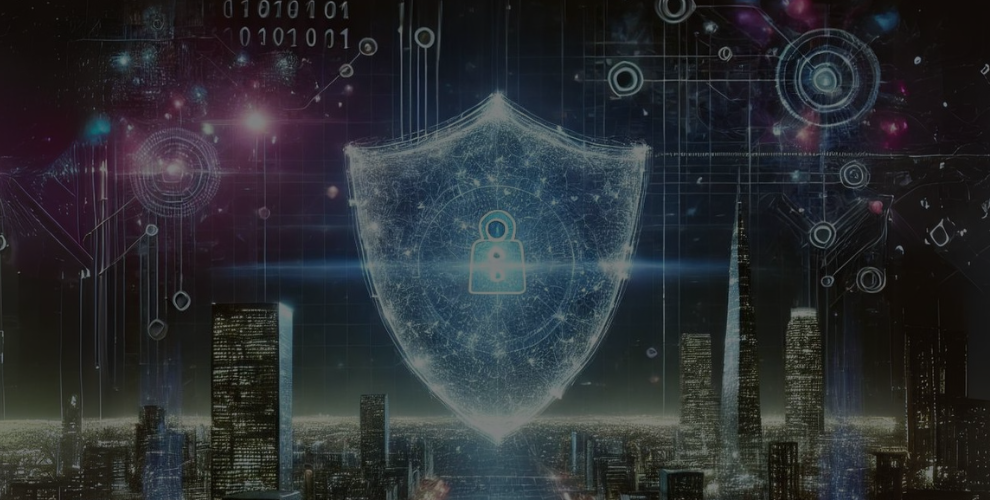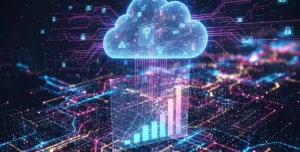
The Future of Cybersecurity: 5 Emerging Trends to Watch
Table of Contents
Introduction
Welcome to WikiGlitz, where we’ve brought you this amazing blog on “The Future of Cybersecurity: 5 Emerging Trends to Watch.”
From protecting personal data to securing national infrastructures, cybersecurity is now at the forefront of technological advancements.
As we look toward the future, staying ahead of emerging cybersecurity trends is crucial for businesses and individuals alike. In this article, we’ll explore the most significant trends shaping the future of cybersecurity and what they mean for you.
Key Takeaways
- The future of cybersecurity will be shaped by rapid technological advancements that introduce both opportunities and challenges for businesses and individuals.
- Emerging cybersecurity trends are focused on addressing evolving threats as cybercriminals become more sophisticated and adaptive.
- Businesses need to stay ahead of these trends to protect their data, systems, and reputations from future cybersecurity threats.
Artificial Intelligence and Machine Learning in Cybersecurity
Artificial Intelligence (AI) and Machine Learning (ML) are no longer just buzzwords; they are actively being integrated into cybersecurity frameworks to enhance threat detection and response capabilities.
AI and ML allow for the analysis of vast amounts of data in real-time, identifying patterns and anomalies that could indicate potential threats.
One of the most significant emerging cybersecurity trends is the use of AI-driven tools to automate the detection of cyber threats.
These tools can analyze behavior patterns and recognize anomalies much faster than human analysts, enabling quicker and more accurate responses to potential attacks.
This shift towards automation is crucial as cyber threats become increasingly complex and widespread.
Impact of AI and ML on Future Cybersecurity Solutions:
- Proactive Threat Detection: AI and ML can predict and identify potential threats before they cause harm, significantly reducing the risk of breaches.
- Improved Incident Response: AI-powered systems can automate responses to certain types of threats, minimizing the time it takes to neutralize an attack.
- Enhanced Accuracy: By learning from past incidents, AI and ML systems can continuously improve their accuracy in detecting threats, reducing false positives.
As the integration of AI and ML in cybersecurity continues to evolve, these technologies will play a critical role in shaping the future of cybersecurity, offering more robust defenses against increasingly sophisticated cyber threats.
The Rise of Zero Trust Architecture
Zero Trust Architecture (ZTA) is rapidly becoming a cornerstone of modern cybersecurity strategies.
Unlike traditional security models that operate on the assumption that everything within a network is trustworthy, Zero Trust operates on the principle of “never trust, always verify.”
This approach eliminates implicit trust within a network, meaning that every device, user, and connection must be authenticated and authorized, regardless of whether it is inside or outside the network perimeter.
The rise of Zero Trust Architecture is driven by the increasing frequency and sophistication of cyberattacks that exploit the weaknesses of traditional security models.
As more businesses adopt cloud services and remote work becomes the norm, the need for a security model that addresses these changes is more critical than ever.
Key Trends in Cybersecurity:
- Granular Access Control: Zero Trust enables more precise control over who has access to what resources, reducing the risk of unauthorized access.
- Continuous Monitoring: Zero Trust architectures involve continuous monitoring of network activity, ensuring that any suspicious behavior is detected and addressed immediately.
- Scalability: ZTA is highly scalable, making it suitable for organizations of all sizes, from small businesses to large enterprises.
As cyber threats continue to evolve, the adoption of Zero Trust Architecture is expected to grow, making it a key trend in the future of cybersecurity. Businesses that implement Zero Trust will be better positioned to protect their networks against both internal and external threats.
The Evolution of Cloud Security
Aas more organizations migrate to the cloud, the need for robust cloud security measures has become increasingly urgent.
The evolution of cloud security is one of the most significant cybersecurity trends of recent years, and it continues to be a focal point as we move into 2024.
As cloud environments grow more complex, so do the threats targeting them.
Cybersecurity evolution in the cloud space is driven by the need to protect sensitive data from breaches, ensure compliance with regulations, and secure multi-cloud and hybrid environments.
Upcoming Cybersecurity Technologies in Cloud Security:
- Cloud-native Security Solutions: These are tools and technologies designed specifically for cloud environments, offering advanced protection that traditional security measures cannot provide.
- Automated Threat Detection: Automation plays a crucial role in cloud security, enabling real-time threat detection and response across vast, dynamic cloud environments.
- Zero Trust in the Cloud: The principles of Zero Trust are increasingly being applied to cloud security, ensuring that no entity within the cloud is trusted by default.
As businesses continue to embrace cloud computing, the need for advanced cloud security solutions will only grow.
The future of cybersecurity in the cloud will be shaped by ongoing innovations aimed at addressing the unique challenges posed by this ever-expanding landscape.
Increased Focus on Privacy and Data Protection
In the wake of high-profile data breaches and growing public concern over privacy, data protection has become a top priority for businesses and regulators alike.
The increased focus on privacy and data protection is not just a trend; it is a fundamental shift in how organizations approach cybersecurity.
Laws such as the General Data Protection Regulation (GDPR) in Europe and the California Consumer Privacy Act (CCPA) in the United States have set new standards for data protection, forcing businesses to adopt more stringent cybersecurity measures.
These regulations have also driven innovations in cybersecurity aimed at safeguarding personal and sensitive data.
Cybersecurity Trends to Watch in Data Protection:
- Encryption Everywhere: Encryption is becoming a standard practice across all levels of data storage and transmission, ensuring that even if data is intercepted, it cannot be read or used maliciously.
- Data Masking and Anonymization: These techniques are increasingly used to protect sensitive data by rendering it unintelligible to unauthorized users.
- Compliance-driven Security: Businesses are investing heavily in cybersecurity solutions that help them comply with global data protection regulations, reducing the risk of hefty fines and reputational damage.
As privacy concerns continue to shape the cybersecurity landscape, businesses must stay ahead of emerging trends and technologies in data protection. By doing so, they can safeguard their customers’ data, maintain regulatory compliance, and build trust with their audience.
The Growing Threat of Ransomware and Advanced Persistent Threats (APTs)
Ransomware and Advanced Persistent Threats (APTs) represent two of the most significant challenges in the current cybersecurity landscape.
As these threats evolve, they are becoming more sophisticated, targeted, and destructive, making them a key focus for cybersecurity professionals and businesses alike.
Ransomware: Ransomware attacks involve malicious software that encrypts a victim’s data, demanding a ransom for the decryption key. These attacks have escalated in frequency and severity, with cybercriminals targeting critical infrastructure, healthcare systems, and large corporations. The future of cybersecurity must address this growing threat with more advanced and proactive defenses.
Advanced Persistent Threats (APTs): APTs are highly targeted, long-term cyberattacks where the attacker gains and maintains unauthorized access to a network. Unlike typical cyberattacks, APTs are carefully planned and executed, often by well-funded groups, including nation-states. APTs aim to steal sensitive data, disrupt operations, or cause long-term damage.
Future Cybersecurity Solutions for Ransomware and APTs:
- Behavioral Analytics: By monitoring and analyzing user behavior patterns, security systems can detect anomalies that may indicate a ransomware attack or an APT in progress.
- Endpoint Detection and Response (EDR): EDR solutions are critical in identifying and responding to threats at the endpoint level, where many ransomware and APT attacks begin.
- Threat Intelligence Sharing: Collaboration between organizations to share threat intelligence can help identify and neutralize ransomware and APT threats more effectively.
As ransomware and APTs continue to pose significant threats, businesses must prioritize these areas in their cybersecurity strategies.
Keeping up with the latest cybersecurity trends and adopting innovative technologies will be crucial in mitigating the risks associated with these advanced threats.
Future Cybersecurity Challenges: Adapting to a Rapidly Changing Landscape
The cybersecurity landscape is in constant flux, with new threats, technologies, and regulations emerging regularly. This rapid pace of change presents numerous challenges for businesses striving to protect their assets and data.
Key Future Cybersecurity Challenges:
- Complexity of Threats: Cyber threats are becoming more complex, often involving multiple attack vectors and sophisticated techniques. Businesses must be agile and adaptive in their approach to cybersecurity, ensuring they can respond to these evolving threats effectively.
- Skill Shortages: The cybersecurity industry faces a significant skills gap, with a shortage of qualified professionals to combat the growing number of cyber threats. This challenge requires investment in training and development, as well as the adoption of automated security solutions to fill the gap.
- Integration of New Technologies: As businesses adopt new technologies such as the Internet of Things (IoT), artificial intelligence, and blockchain, they must also address the unique security challenges these technologies bring. Ensuring that security is built into these technologies from the start is crucial for mitigating future risks.
Adapting to Cybersecurity Trends 2024 and Beyond:
- Continuous Learning: Businesses must stay informed about the latest cybersecurity trends and predictions, ensuring they can adapt their strategies as the landscape changes.
- Proactive Security Measures: Rather than relying solely on reactive defenses, businesses should implement proactive security measures, such as regular penetration testing, threat hunting, and security audits.
- Resilience Planning: Developing a robust incident response plan and ensuring that the organization can quickly recover from a cyberattack are essential for long-term resilience.
As the cybersecurity landscape continues to evolve, businesses that can adapt to these challenges will be better equipped to protect their operations and maintain customer trust.
The Role of Governments and Regulations in Shaping the Future of Cybersecurity
Governments around the world are playing an increasingly active role in shaping the future of cybersecurity through legislation, regulations, and international cooperation.
These efforts are designed to address the growing threat of cyberattacks and protect critical infrastructure, data privacy, and national security.
Key Regulatory Developments:
- General Data Protection Regulation (GDPR): The GDPR has set a high standard for data protection in the European Union, influencing global cybersecurity practices. Businesses that operate in the EU or handle EU citizens’ data must comply with strict requirements, including data encryption, breach notification, and data subject rights.
- California Consumer Privacy Act (CCPA): Similar to the GDPR, the CCPA has introduced rigorous data protection standards in the United States, impacting how businesses collect, store, and use personal data.
- National Cybersecurity Strategies: Many countries are developing comprehensive national cybersecurity strategies that include critical infrastructure protection, cyber defense initiatives, and public-private partnerships to enhance cybersecurity resilience.
Cybersecurity Trends and Predictions Related to Regulations:
- Increased Regulatory Scrutiny: As cyber threats continue to grow, businesses can expect increased regulatory scrutiny and more stringent cybersecurity requirements.
- Global Cooperation: International cooperation on cybersecurity is likely to expand, with countries working together to combat cybercrime and protect global digital infrastructure.
- Impact on Businesses: Compliance with emerging regulations will require businesses to invest in more robust cybersecurity measures, including data protection, threat detection, and incident response capabilities.
Governments and regulations will continue to play a pivotal role in shaping the future of cybersecurity. Businesses must stay informed about regulatory changes and ensure they are compliant to avoid penalties and protect their reputation.
How Companies Can Get Ready for Cybersecurity in the Future
As the cybersecurity landscape continues to evolve, businesses must take proactive steps to prepare for emerging threats and challenges.
Staying ahead of the curve involves more than just adopting the latest technologies; it requires a comprehensive approach that includes employee training, regular security assessments, and strategic investments.
Practical Steps for Businesses:
- Employee Education and Awareness: One of the key reasons why cybersecurity breaches still occur is human mistakes. Frequent training sessions can assist staff members in identifying phishing efforts, appreciating the value of secure passwords, and adhering to data security best practices.
- Regular Security Audits: Conducting regular security audits and penetration tests can identify vulnerabilities in your systems before they are exploited. These assessments should be an integral part of your cybersecurity strategy, helping to ensure that your defenses are up to date.
- Invest in Advanced Technologies: Businesses should invest in the latest cybersecurity technologies, such as AI-driven threat detection, Zero Trust Architecture, and cloud-native security solutions. These technologies can provide an additional layer of protection against sophisticated cyber threats.
- Develop a Robust Incident Response Plan: Having a well-defined incident response plan is crucial for minimizing the impact of a cyberattack. This plan should include steps for identifying the breach, containing the damage, notifying affected parties, and restoring normal operations.
- Stay Informed About Cybersecurity Trends: Keeping up with the latest cybersecurity trends and predictions is essential for staying ahead of potential threats. Businesses should regularly review industry reports, attend cybersecurity conferences, and engage with experts to ensure they are informed about emerging risks.
By taking these proactive steps, businesses can better protect themselves against the evolving threats in the cybersecurity landscape and ensure they are prepared for the future.
Conclusion
We’ve brought you this amazing blog on “The Future of Cybersecurity: 5 Emerging Trends to Watch.”
As we’ve explored, the future of cybersecurity will be shaped by several key trends, including the rise of AI and machine learning, the adoption of Zero Trust Architecture, advancements in cloud security, a growing focus on privacy and data protection, and the increasing threat of ransomware and APTs.
To stay ahead in this rapidly evolving landscape, businesses must be proactive in their approach to cybersecurity.
This involves staying informed about emerging trends, investing in advanced technologies, and ensuring compliance with ever-changing regulations.
At WikiGlitz, we’re committed to providing you with the latest insights and information to help you navigate the future of cybersecurity.
Follow WikiGlitz for more such insights on technology and cybersecurity, and stay ahead of the trends shaping the digital world.
FAQs
What are the key trends in cybersecurity to watch in 2024?
The key trends include the integration of AI and machine learning in threat detection, the rise of Zero Trust Architecture, advancements in cloud security, an increased focus on privacy and data protection, and the growing threat of ransomware and APTs.
What is Zero Trust Architecture, and why is it important?
Zero Trust Architecture is a security model that eliminates implicit trust within a network. Every user and device must be authenticated and authorized, regardless of their location. This approach is crucial for protecting networks in a world where remote work and cloud computing are becoming the norm.
What are the biggest future cybersecurity challenges for businesses?
The biggest challenges include the complexity of emerging threats, the shortage of skilled cybersecurity professionals, the need to integrate new technologies securely, and the requirement to stay compliant with increasingly stringent regulations.
How can businesses prepare for emerging cybersecurity threats?
Businesses can prepare by investing in employee training, conducting regular security audits, adopting advanced cybersecurity technologies, developing a robust incident response plan, and staying informed about the latest trends and threats.
Want to keep up with our blog?
Our most valuable tips right inside your inbox, once per month.
Error: Contact form not found.
WikiGlitz Team
Welcome to WikiGlitz, your ultimate destination for tech insights and innovation. Our expert team is dedicated to delivering free resources and professional advice on various technology topics, including Artificial Intelligence, Cyber Security, Cloud Computing, and more. We strive to empower our readers with up-to-date information and practical guidance, ensuring you stay ahead in the rapidly evolving tech landscape. At WikiGlitz, we are passionate about making complex technology accessible to everyone. Our team of seasoned experts curates content that is both informative and engaging, helping you understand and leverage the latest tech trends. Whether you're a tech enthusiast or a professional, WikiGlitz is your go-to source for reliable, expert-driven content. Join us on this journey to explore and embrace the future of technology.





